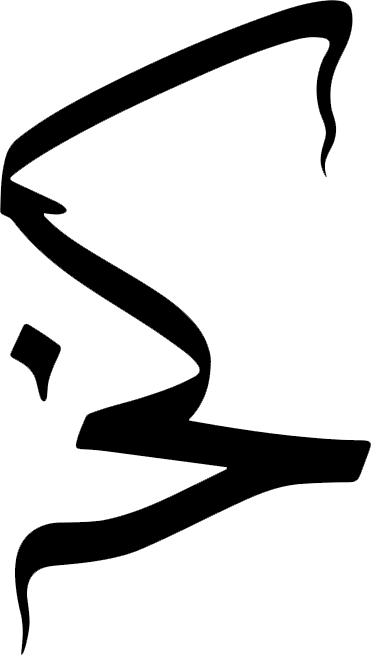A Love Letter to Mosul
by Yousif Kalian
This work appears in Khabar Keslan Issue 1. DISORIENT
Iraqi market (Souk) in Mosul city, northern Iraq, between Sept. 26 and Oct. 12, 1932. G. Eric and Edith Matson Photograph Collection; Library of Congress LC-DIG-matpc-13267
Towards a Moslawi archive
The folk music of Mosul, originally performed by its large Jewish population, holds a special place in the heart of Moslawis. These songs encompass the best of what it means to be Moslawi: the drama surrounding weddings and cooking, the summer trips to the baths of Hamam al-Aleel and praying for fertility at Khidr Ilyas.
There is one song of all of these that is synonymous with the city of Mosul. All Moslawis can recite the lyrics with passion and beam when it is mentioned to them by Iraqis from other cities. Called Yardili, the song recounts a true love story between a poor Muslim man and a rich Christian woman that reportedly occurred around 1875. The origin of the word Yardili is shrouded in mystery: some think it is the name of the Christian woman the Muslim man fell in love with. Others claim it is rooted in the Turkish words “yar” meaning young female and “deli” meaning pampered.
We know the song came to Mosul through an Armenian singer from Mardin in 1916 named Jabu. There are dozens of verses to the song, not all of which are compiled in one version of the song. The most well-known version is that sung by Iraqi singer Bassam Naeem, whose lyrics are:
“How many Yardili (2x)
Oh dark skinned one, you’ve killed me
I fear the lord in the skies, that you will leave me to be alone
Your father, oh beautiful dark skinned one, is not of my religion
You stay with you religion, and I stay with mine
You fast your fifty, and I fast my thirty
They’ll wish for us cold drinks and high rooftops
I am headed to Aleppo (2x)
Of what do you want from me oh beloved (2)”
Later on in the song, Naeem recounts the story of the lover’s wedding and all of the drama surrounding cooking food and wedding traditions. The story told in the folk song represents everything that once made Mosul great: interfaith coexistence, diversity, its beautiful weather, love and the brotherhood that existed between the three large cities of Mardin, Mosul, and Aleppo before the creation of artificial borders. This song speaks to Mosul’s relative proximity to Aleppo, as opposed to Baghdad, and shows how the city came to be to be a hub of pan-Arab nationalism.
Mosul’s children include famous Iraqis around the world; architect Zaha Hadid, oudist Munir Basheer, and renowned musician Kathem al-Saher all have deep Moslawi roots. In fact, Dame Zaha Hadid’s grandfather was a politician who worked tirelessly towards ensuring the wilayah of Mosul would become part of Iraq and not Turkey.
Mosul’s Arabic is in itself a mark of pride for Moslawis. It borrows heavily from Syriac, Kurdish, Turkish, and Farsi, due to its large Syriac Christian, Kurdish and Turkmen population. Aside from these influences, it doesn’t stray far from Classical Arabic and sticks to heavy letters other Arabic speakers drop, such as ق ,ع, and غ.
Religion runs through the city’s bloodstream. Shrines, churches, mosques, monasteries, and madrassas were plenty in Mosul. The ancient Assyria-era winged-bull, human-faced beings called the Lamassu’s, could be found dotted throughout the city.
Muslims and Christians both visited the mosque of the Prophet Jonah, the Old Testament prophet once swallowed by the whale, where he supposedly was buried. Both visited the Monastery of the Christian mystic Mar Mattai built into the mountainside of Mt. Maqloub.
The song Yardili needs to be revisited by Iraqis and non-Iraqis, especially as Mosul is now being slowly liberated from the hell it has endured under the Islamic State. The people of Mosul, now entirely devoid of its Christian community after they were expelled by IS, must not forget their ancient and beautiful relationship with Christians. Moslawis lived with monasteries and churches in the skyline. It was tradition that Muslims would cook food and dessert for their Christian neighbors during Christian holidays and their Christian neighbors would do the same for Muslim holidays.
Mosul, meaning “the place of arrival” in Arabic, lives on in its sons and daughters in cities across the world—from Detroit to Stockholm, from refugee camps in Iraq to Toronto. Mosul’s glorious past lives on and it will be the duty of all of its children, both abroad and still there, to reconstruct it and enable it to return to the pinnacle it had reached before. I pray Mosul will be rebuilt so that the Lamassu’s will guard the city once more and its children will be free to follow in their ancestors’ footsteps to trade and build and pray.
Yousif Kalian is an independent Middle East analyst focusing on Iraq and the greater Levant. He is Iraqi-American and graduated from the Catholic University of America. He is interested in Iraqi history, Christianity in the MENA, and tarab music and currently lives between Philadelphia and Washington DC. His work has been published by the Washington Institute for Near East Policy and the International Center for Counter Terrorism. Follow him on Twitter @ykaliany.

